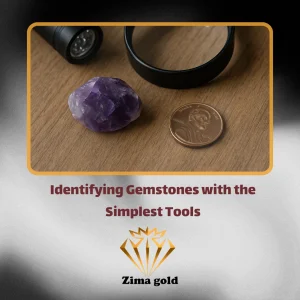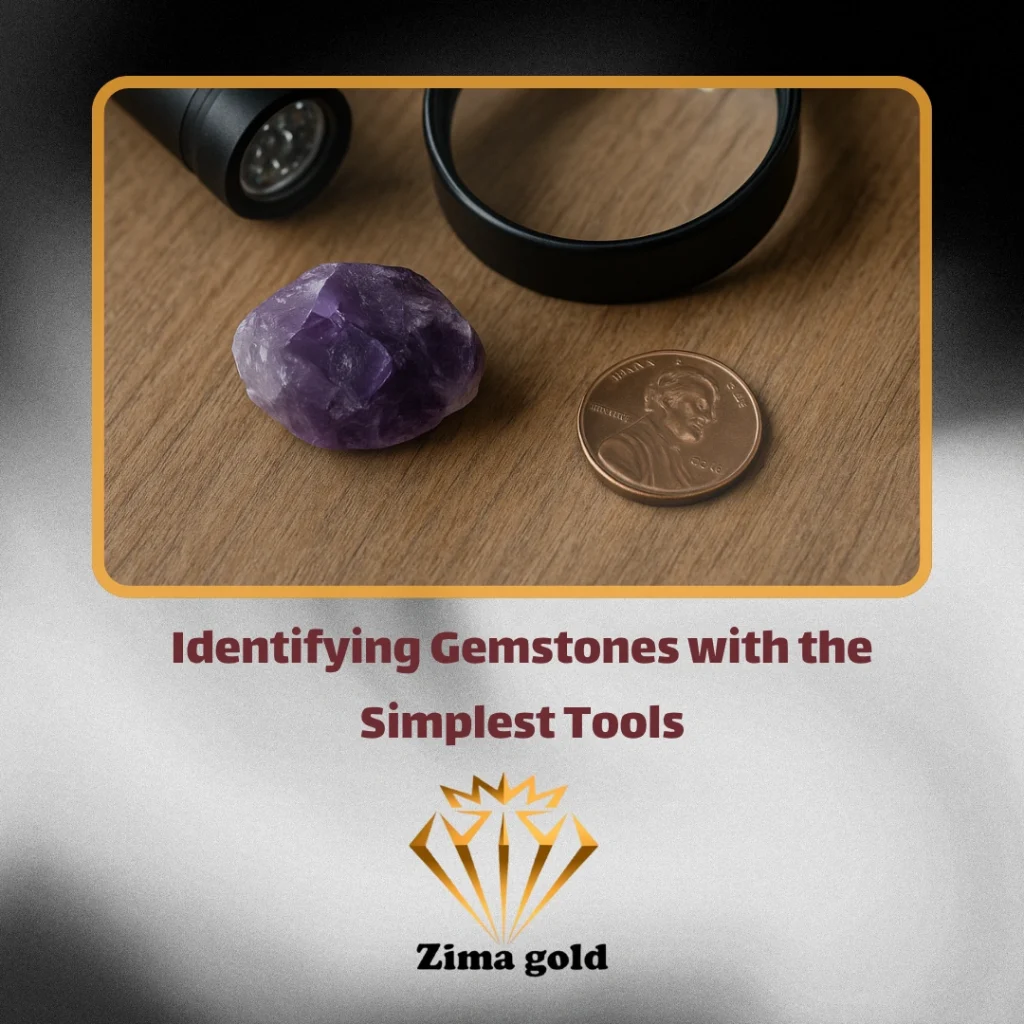Identifying Gemstones with the Simplest Tools
Identifying Gemstones with the Simplest Tools.Gemstones have always symbolized beauty, power, and wealth. From ancient times to today, people have sought these natural treasures with fascination.
But the key question remains: How can we tell if a gemstone is real or fake?
In this article, we’ll explore how to identify genuine gemstones using simple, everyday tools — no expensive equipment required.
Why Identifying Gemstones Matters
The gemstone and jewelry market is expanding rapidly, and with it, imitation and synthetic stones have become common.
Sometimes, synthetic stones look so realistic that it’s almost impossible to tell the difference at first glance.
Learning basic identification techniques helps you avoid financial loss and make confident purchases.
Keep in mind, though, that home methods are suitable only for preliminary evaluation — for full verification, you should always consult a professional gemologist or laboratory.
Simple Tools for Gemstone Identification
You don’t need advanced lab gear to get started.
A few basic tools — many of which you may already have at home — can help you distinguish between natural and synthetic stones.
Let’s go through them one by one 👇
1. Magnifier or Loupe
A 10x jeweler’s loupe is the most essential tool in gemology, even for professionals.
It allows you to observe the stone’s internal structure.
Tips for Use:
-
Examine the stone under bright light.
-
Look for air bubbles — they often indicate a synthetic or glass stone.
-
In contrast, natural inclusions, uneven crystal lines, or internal fractures usually mean the stone is genuine.
2. Flashlight or Strong Light Source
A flashlight can reveal a lot about transparency and light dispersion.
How to Use It:
-
Shine light directly through the stone.
-
If light passes easily, it’s transparent or translucent (like quartz, ruby, or jade).
-
If no light passes through, it’s likely opaque, such as turquoise.
💡 Note: Artificial stones tend to scatter light uniformly, while natural ones show uneven internal refraction.
3. Hardness Test (Nail or Coin Method)
The Mohs hardness scale is one of the simplest ways to compare stones.
Quick Guide:
-
If the stone scratches easily with a fingernail, its hardness is below 2.5.
-
If it can be scratched by a coin, hardness is around 3–4.
-
If even a knife blade cannot scratch it, the stone is quite hard — possibly ruby (9) or diamond (10).
⚠️ Tip: Try this test only on an inconspicuous area to avoid visible damage.
4. Checking Density (Specific Gravity)
Identifying Gemstones with the Simplest Tools.Synthetic stones are often lighter than their natural counterparts.
You can estimate density using a kitchen scale and a glass of water.
Steps:
-
Weigh the stone in air.
-
Weigh it again while submerged in water.
-
The difference helps estimate density — heavier, denser stones are usually natural.
5. Observing Color and Luster
Natural gemstones have depth and complexity in color, while artificial stones often look overly bright and uniform.
-
If color seems painted or concentrated on the surface, it’s likely dyed or synthetic.
-
Natural stones display color variations, reflections, and imperfections within.
6. Temperature Test
Natural stones feel cool to the touch and warm up slowly.
How to Try:
Hold the stone in your hand for a few seconds:
-
If it warms up instantly → likely glass or plastic.
-
If it stays cool → possibly a real gemstone.
7. Glass Scratch Test
Gemstones harder than glass (hardness above 5.5) can scratch it.
Test:
-
Lightly drag the stone across a glass surface.
-
If it leaves a mark on the glass but remains intact, it’s likely real.
-
If the stone chips or scratches easily, it’s likely fake or soft.
8. Using Water or Mineral Oil
Applying a drop of water or mineral oil on a stone can reveal internal structures.
In genuine gemstones, light bends irregularly, producing natural sparkle.
In contrast, synthetic stones reflect light more uniformly.
Types of Stones: Natural, Synthetic, and Imitation
Not all non-natural stones are “fake.” Let’s clarify the terminology:
| Type | Description | Market Value |
|---|---|---|
| Natural | Formed naturally within the Earth | Highest |
| Synthetic | Lab-grown but chemically identical | Moderate |
| Imitation | Only looks similar; different composition | Low |
Thus, while synthetic stones may have the same structure as natural ones, their value and rarity are much lower.
Common Signs of Fake Gemstones
If a stone seems too perfect — or too cheap — proceed cautiously.
Typical indicators of fake stones include:
-
Lighter weight than expected
-
Overly bright or uniform color
-
Heats up quickly in hand
-
Tiny bubbles inside
-
Scratches easily

For Enthusiasts: Professional-Level Tools
If you want to explore gemology more deeply, consider investing in these tools:
-
Refractometer: measures refractive index
-
Polariscope: identifies optical properties
-
Gem microscope: shows inclusions and internal patterns
-
UV Light: reveals fluorescence in stones like ruby or diamond
Conclusion
Identifying genuine gemstones is a fascinating and rewarding skill.
With simple tools like a loupe, flashlight, coin, and water, you can perform basic checks to spot many synthetic or imitation stones.
Still, for full authentication, it’s always best to seek a certified gemologist or laboratory test.
In a world where appearances can deceive, your knowledge and attention to detail remain the most valuable tools of all.

